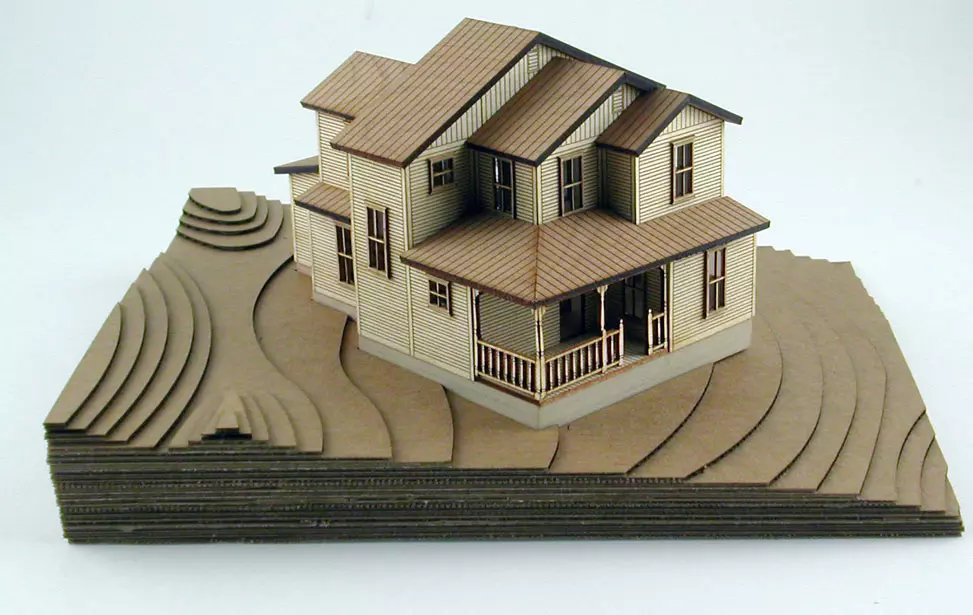Architects design three-dimensional drawings of projects, which are then translated into models to visualize the finished state of the ongoing project. It's reassuring for interested clients, such as for residential or villa projects, to examine the details before purchasing and see what they will be buying. Nowadays, architectural models are the most important material for project presentations, and it's crucial that they remain intact and are presented flawlessly during the presentation. Therefore, it's essential to be careful in choosing the materials used in constructing the model. Choosing durable and sturdy materials is crucial to ensure the model's longevity and keep it unaffected by environmental conditions.
Architects typically choose from various solid materials such as wood, PVC sheets, ABS, acrylic sheets, and among them, wood is most often preferred due to its advantages. A 3D wooden model can withstand damages for a long time and remain intact without being affected by its surroundings.
Using wood offers several advantages, including the ability to have thin sheets or geometric shapes, a smooth surface, ease of cutting and painting, and versatility for use in both heavy and detailed architectural models. Due to all these advantages, the choice of wood as a material has become increasingly popular in recent times.
For making a 3D wooden model, it's necessary to first examine the project's details to decide on the thickness, shape, and materials to be used. After the material selection, the construction of the main part of the model begins. The main part of the model, made from solid wood, is painted and mounted on a base designed to best reflect reality. Regarding the base, it's important to work on details such as height and distance from the road to properly position the building.
After assembling the model's structure, a landscaping project is carried out to place the green spaces, gardens, walkways, and decorative fountains around the building. When designing the landscaping project, it's essential to reproduce the planned location of parks, gardens, walkways, and fountains around the building as realistically as possible. After completing the landscaping, it's necessary to finalize the model using modern technologies to add light, sound, and water effects, giving it an aesthetic appearance.





